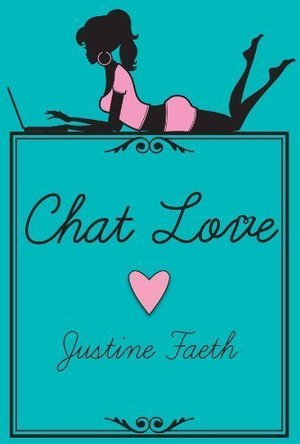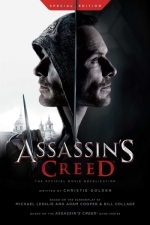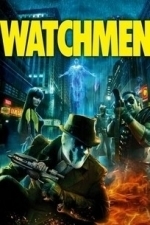
Prayer Prompter - Christian Prayer App
Productivity and Lifestyle
App
A God-centered, worship-based prayer app that stores and organizes Scripture passages and prayer...

Notebooks for iPhone
Productivity and Business
App
This is the "iPhone only" version of Notebooks. If you want to run it on your iPad, too, you might...

Find My Device - Bluetooth 4.0
Health & Fitness and Utilities
App
Find Your Lost Apple Watch, iPhone, iPad, Hearing Aids And Other Bluetooth 4.0 Devices Fast. Need...
Ivana A. | Diary of Difference (1171 KP) rated Chat Love in Books
Oct 2, 2020
The book synopsis is a very promising one. Lucia is having trouble finding a man. After a few disastrous dates, she chooses to follow her friend’s advice and tries Chat Love, an online dating service.
As promising as the synopsis sounds, this book didn’t quite deliver. With Chat Love, I found the whole setting of the book unrealistic. There is a nice background story and a great idea, but it hasn’t been properly executed.
Lucia is an Italian lady. She is a city girl and a business woman. She is searching for love. See, Lucia is under pressure by her Italian family to get married. And I can completely understand that pressure, being born in a country where I have met people with similar beliefs. Lucia’s family thinks that a woman is made to be a mother, and not have a career. They think that if you are thirty and you haven’t got a boyfriend yet, you are useless and unworthy.
And I completely agree with Lucia when she tries to stand up to them and tell them how it’s important for her to find a man she will really love, not just marry in order to please her family. In some scenes though, it appears as if she hates her family, and has very bad attitude towards them. I understand completely where her frustration comes from.
But then, on the other hand, we have a Lucia that is being a hypocrite.
And while this whole book seems like she is searching for her true love, when someone appears and cares about her, she is acting as if she’s not interested. Woman, WHAT DO YOU WANT? She wants true love, and she doesn’t want to be used as a one-night stand, which is completely acceptable. But going on a date with a man for the first time, and telling him you want to get serious is creepy. Even if that is your long-term goal, you DO NOT say it on the first date. It scares people away. It makes people think you are a creep.
Also, given the fact that the synopsis promises an online app, this left me disappointed. During this book, we don’t get to really see a single chat happen through this app. Apart from a few letters from Jake. Honestly, I expected a back and forth conversations with men before a date happens. In the book, we get to see Lucia dating a lot of men. I didn’t stop to count them, but there must’ve been around twenty dates. And all these men had something wrong with them. But she never screwed up.
I will be honest with you now, and you people need to be honest with yourselves. In your life, you will meet people, and some people will make you giggle. Others might make you gag. But sometimes, the reason for a bad date is you. I am only trying to be honest here. I have screwed up a few dates myself, and you must have done the same thing too. That’s life though. We have to move on and try not to blame others for our mistakes. I wish this been represented in this book.
I really wish I loved this book.
I have mixed feelings, because despite all, this book did make me think and bring up discussions with people around the various topics, from family beliefs, to being creepy on first dates, to finding out what you really like. In a summary, as much as I didn’t enjoy it, I also am grateful for this book, for bringing out a lot of things to think about.
If you love chick-lit and short romance funny novels, you might enjoy it. If you think any of this discussion points is intriguing, you might enjoy it. I would love to have a chat and see what you think of this book.

Knitting Tutorials for Beginners - Learn How to Knit Easily
Education and Lifestyle
App
Learn an easier, faster, more enjoyable method of knitting that is kinder to your hands, neck and...
BankofMarquis (1832 KP) rated Everything Everywhere All At Once (2022) in Movies
Apr 15, 2022
After that point, either it will click in your brain…or it won’t. If it does - great! If not…continue to sit back and enjoy the mind-bending experience you are having.
For…EVERYTHING EVERYWHERE ALL AT ONCE is a trippy head-trip of a film that is certainly unique - but it also has something going for it that all good films do - characters that you will care about in a story that will touch your heart.
Written and Directed by Dan Kwan and Daniel Scheinert (SWISS ARMY MAN), EVERYTHING…tells the tale of unhappily married couple Evelyn Wang (Michelle Yeoh) and Waymond Wang (Ke Huy Quan), her father Gong Gong (the great James Hong) and their daughter, Joy (Stephanie Hsu). When interdimensional travel interrupts their mundane life, things get much, much more than mundane.
Yes, folks, you read that right INTERDIMENSIONAL TRAVEL - and this is not a Marvel movie! Evelyn and family start jumping to parallel dimensions, experiencing everything, everywhere…all at once (hence, the name of the film).
This is a smart, unique and visually interesting film and credit for this must go to Wang and Scheinert. They have come up with something unusual. However, they don’t just do “unusual for unusual sake” they wrap this film up - and connect the dots - in a satisfying way in the end. Oh…and they also build in some incredibly impressive fight scenes along the way. To not hype them too much, but these are the best fight scenes that have been on film in quite some time - certainly the most interesting and unique since the JOHN WICK films.
The duo, smartly, enlisted the aid of the underappreciated - but very talented - Michelle Yeoh (CRAZY RICH ASIANS) as the protagonist of this piece. It is a wise choice for she must go from mousey housewife to kick-butt SuperHero (and everywhere in between) throughout the course of this film and her Martial Arts background comes in very, very handy. It is a bravura performance by Yeoh and it would be TERRIFIC if her name is called come awards season next year (yes, it is that good of a performance).
She is ably assisted by Hong (a veteran character actor with more than 450 credits to his name), Hsu (known for her role as Mei in THE MARVELOUS MRS. MAISEL) and, especially Quan (the kid “Short Round” who assists the hero in INDIANA JONES AND THE TEMPLE OF DOOM) - it was good to see Quan back on the big screen.
The filmmakers also sprinkle some very strong character actors/actresses in the mix here. Both Jenny Slate (Mona-Lisa Saperstein in PARKS & REC) and Harry Shum, Jr. (GLEE, CRAZY RICH ASIANS) are fun in small roles as is the aforementioned James Hong as Gong Gong (the Grandfather).
But…the person who ALMOST steals this film from Ms. Yeoh is the incomparable Jamie Lee Curtis as the somewhat overweight and out of shape IRS Agent who plays a pivotal role in Evelyn’s life across the Dimensions. It is a fun role for Curtis who is not afraid to look physically bad. Again, I would LOVE IT if she got some love come awards time next year (she won’t, but maybe in some other parallel Universe she would).
Not for everyone - the multi-dimensional travel is going to give some folks a headache as they try to figure things out - but if you surrender yourself to the wildness that is going on, and embrace the spirit and the heart of this film, you will be rewarded with a very rich film going experience.
Letter Grade: A-
8 Stars out of 10 (might move up to 9 on a rewatch) and you can take that to the Bank(ofMarquis)
5 Minute Movie Guy (379 KP) rated Scary Stories to Tell in the Dark (2019) in Movies
Sep 16, 2019
In Mill Valley, Pennsylvania in 1968, a group of teenage friends fleeing from a band of bullies hide out in an abandoned haunted house on Halloween night. They know the story of this house well, whose folklore is rooted in the origins of their own small town. It was once owned by the wealthy Bellows Family, who according to urban legend, locked away their own daughter, Sarah Bellows, inside the cellar of their home. Sarah had been accused of killing the town’s children, and so her family kept her hidden away and attempted to erase her from existence, even removing her from their own family portraits. According to legend, Sarah wrote a book of horror stories and would read them aloud through the walls of her room to frighten the local townspeople.
While inside this haunted house, our group of protagonists; Stella (Zoe Colletti), Ramón (Michael Garza), Auggie (Gabriel Rush), and Chuck (Austin Zajur), discover the room Sarah had spent her life trapped in. Stella, an amateur horror writer herself, finds the rumored book that was written by Sarah. Upon opening it she sees that a new page is somehow being written in blood right before her very eyes, and it happens to be about the bully that chased them into the house. The next day, they realize that it seems as though the story actually came true, and that the book itself may be haunted. This establishes the basic premise of the film, in which new stories are being written in the book and they appear to be targeting Stella and everyone else that entered the Bellows’ house that night.
It’s an interesting set-up that cleverly mixes horror with mystery, as the characters are not only trying to survive these stories as they come to life, but are also trying to figure out how to stop them from happening. The film features five different stories from the series, most of which come from the third and final book, and a sixth story centered around Stella and Sarah Bellows that is at least in part inspired by one of the original tales. To give an example without giving too much away, one story for instance, involves a haunted scarecrow, whereas another is about a walking corpse in search of its severed big toe. The stories themselves are much more dark and grotesque than I had anticipated. I was expecting something more along the lines of Goosebumps, which was a series of children’s horror books that I personally loved and grew up with as a child, but these are much more disturbing than that. While I only found the first story of the film, “Harold”, to actually be scary, I do imagine this movie might be a little too frightening for some teenagers.
I should clarify that I’m not familiar with the original written source material of Scary Stories to Tell in the Dark, and I had truthfully never even heard of the books prior to the movie’s announcement. I don’t have any personal stake in these stories, but I do admire the thoughtfulness and creativity that went into building the film around them. I thought the film started out really strong with a likable cast of characters, and with most of its best moments featured early on. I loved the introduction to the haunted house and the legend of the Bellows Family. I enjoyed the playful nature of our group of young protagonists, who in the beginning felt reminiscent of the fun and crazy kids you might find in an 80s movie like The Goonies. Additionally, I liked the mystery of Sarah Bellows that the kids were trying to uncover, all the while struggling to survive the dangers of her haunting stories that had come to life.
Unfortunately, as the movie went on, I found myself less and less invested in it with each passing story, all of which I would argue are weaker than the previous one before it. The Pale Lady storyline was particularly dull and underwhelming. The final act itself, although smartly designed with its use of parallels, wound up feeling poorly executed and unsatisfying overall.
Similarly, in regards to the acting, I liked the performances even less by the end as well. Early on I had been impressed with Zoe Colletti as Stella, but I found her to be annoying in the later parts of the movie. The same goes for Austin Zajur as Chuck. The cast for the most part was decent, but everything about the movie began to drop in quality as it dragged on, which is especially unfortunate given how well it starts out.
The special effects are mostly quite good and adequately disturbing, but on the same token, I wish they were more clearly visible at times. A lot of the horror settings take place in dark rooms, so at times it can be hard to see the monsters with much clarity. Still, I love the design of Harold the Scarecrow, as well as The Jangly Man, who is played by contortionist Troy James whose extreme flexibility allows the character to move in unnatural and disturbing looking ways.
To conclude, I’m left with some mixed feelings on Scary Stories to Tell in the Dark. For me, it almost hits the mark, but unfortunately it isn’t a movie that I think I’d bother to watch again. It made a solid first impression with its rich atmosphere and creepy first act, but it failed to maintain its momentum and level of quality. In the end, my favorite thing about the whole movie is actually the excellent cover song of “Season of the Witch” by Lana Del Rey that plays during the credits. However that’s not in any way to say the movie is so bad that the credits were my favorite part. It’s just a great song by an artist I very much enjoy. If you grew up with the Scary Stories to Tell in the Dark series, then by all means, I recommend that you at least check it out. If you like horror and have any troublesome teenaged kids, this may be a perfect opportunity to have some fun scaring the heck out of them.
Connor Sheffield (293 KP) rated Assassin's Creed: The Official Movie Novelization in Books
May 21, 2017
With that said, I turned my attention to the novel, and pre-ordered the special edition because I knew it would make a great addition to my collection of Assassin's Creed novels, and I wanted everything I could possibly get from the novel. I love all the behind the scenes features on a DVD/Blu Ray and when I heard that this book contained some BHS content I wanted it so badly that I made sure I got the special edition despite the addition to the price.
The adaptation of the Film to the novel, is incredible. When Movies are adapted from Books, there will always be the person with you that says "The Book is always better". Sometimes, in the vice versa of this situation, when books are adapted from films, it doesn't always add anything more to make the film's plot better, or give you anything else to think about. This book is something else entirely.
In the movie we are introduced to so many characters, and so many sub plots that just can't be explored in the film itself, because it would be what I and others like to call, a cluster fuck. There would far too much going on, and people already seemed confused by the simple plot of the film, that the addition of these subplots would have given them a headache and everything they needed to see to enjoy the movie would be lost even further, as people would walk out of the cinemas saying "What the heck did I just watch?". Books allow the writer and the reader the freedom to explore these subplots and open up our experience to these other characters such as Moussa, Emir, Nathan, and Lin. If you don't even know these names, that's because the film didn't get the opportunity to express to you the importance of these names, whilst introducing them in a way that you only really remember them as, 'The other assassins in the facility who organize the breakout of Abstergo finale'.
However these characters each have their own Assassin ancestors, at least two of which are heavily connected to the video games. Lin's ancestor, is Shao Jun, the protagonist who you play as in Assassin's Creed Chronicles: China. Emir's ancestor, is a Turkish Assassin named Yusuf, the same Yusuf who you befriend in Assassin's Creed: Revelations, whilst playing as an older Ezio Auditore in his final video game to end the Ezio Trilogy. In the movie's special features, there is a deleted scene in which Cal is able to see these ancestors, during the common room scene as he is trying to eat his steak. However it was taken out due to it not making much sense for him to be able to see other people ancestors via the bleeding effect. The novel on the other hand, doesn't need this scene, and instead the reader is treated to the thoughts and a little backstory to each of these modern day assassins, and how they had felt after being introduced to their ancestors, and how they connected to them through their own lives.
We learn even more about the films central characters as well, mainly Aguilar, Sofia and Callum Lynch, and the novel adaptation gives us a new view on their relationship as a whole. Sofia feels emotions she has never felt with other patients. Callum has a lot running through his mind that just can't be spoken or portrayed in the film. Aguilar's relationship to his fellow Assassin Maria is opened up to us, with us learning that they had been very intimate, and that despite never truly portraying their love for one another, the two assassins knew what the other was thinking and they moved and thought in unison with one another, which makes the final memory sequence, that much more heart breaking, and powerful.
The book grants us access to everything, and this is what makes it such a thrilling read. From start to finish I just wanted to read on and on, despite how heavy my eyes felt at night, tucked up in bed. It grips you and pulls you into the exciting journey of the beautifully written emotional rollercoster. Christie Golden, known for her own literary work and for her work on other franchise based novels, including Star Wars, World of Warcraft and Star Trek, has done a fantastic job at expanded the movie into a new experience, which even I wasn't expecting, and I've watched the film twice in the cinema and about 7 times since the day of it's digital release, March 10, 2017. I really do love this book and everything it has to offer.
My only bad point, which is personal to me, as I have theories about certain points of this movie, and I was hoping it would help answer some of my theories. However, whilst it expanded on them a little, giving more evidence to support one of my theories, it simply left more questions than answers. That is no fault of the writer or her work, but simply to my own inquisitive mind. The book overall has no faults in my opinion.
If you enjoyed the movie, you'll love the book more. If you didn't enjoy the movie, give the book a try. It might surprise you.
Chris Sawin (602 KP) rated Watchmen (2009) in Movies
Jun 22, 2019
A comedian died in New York. Someone threw him out of a window and when he hit the sidewalk his head was driven into his stomach. The only person that seems to care is Rorschach, the one superhero who refuses to take off his mask. The Keene Act was passed in 1977 banning all forms of costumed crimefighting. Rorschach continues to do so as he feels his mask is his true face. His theory is that someone is out to kill costumed heroes and that it's his responsibility to inform his former colleagues. There's Dan Dreiberg/Nite Owl II whom Rorschach used to be partners with before Dan retired, Adrian Veidt/Ozymondias, one of two costumed heroes to make his identity public who's also a self-made millionaire and considered to be the smartest man in the world, Dr. Jon Osterman/Dr. Manhattan, the only one of the group who has genuine super powers thanks to an accident that nearly killed him who is now commissioned by the government, Laurie Jupiter/Silk Spectre II, her mother was in the Minutemen along with The Comedian and wanted her daughter to follow in her footsteps, and finally Edward Blake/The Comedian, another superhero commissioned by the government that knows more than he should while his knowledge takes its toll on him and whoever is around him at the time thanks to his reckless and sadistic behavior. What any of them fail to realize is that there's a conspiracy going on that's bigger than any of them could have ever imagined.
I had watched the motion comic in its entirety earlier in the week to get myself ready for this and it had really gotten me excited for this film. The first time I read Watchmen, I thought it was good but not great. However, I thoroughly enjoyed it the second time through. My biggest question going into the film is how I would feel about the altered ending since I already knew about that going into it. Turns out that the ending in question wasn't so bad, but I wasn't happy with some of the other things that were changed or left out to lead up to said ending.
The film is pretty much right on the money the majority of the time. Zack Snyder continues his trend of pulling panels directly from the source material and making them a cinematic reality. The dialogue is often times word for word from the graphic novel and doesn't feel forced or out of place when something new is used. The cast left nothing to be complained about as they all did a great job. Jackie Earle Haley was a fantastic Rorschach. He sounded just the way I expected Rorschach to sound and just looked like a splitting image of Walter Kovacs. Billy Crudup's emotionless Dr. Manhattan was also pretty much just as I envisioned. Jeffrey Dean Morgan as The Comedian was the one I seemed to be most pleased with. He did a great job making you care about this costumed superhero who did brutally sadistic things to people yet somehow still made you care about his character. Snyder's use of slow motion seems to be used more efficiently this time around. It felt like it was used only when needed rather than just to be eye candy. The effects used with Dr. Manhattan are worth a mention. Even if he's just standing there, you can tell how much time and effort was put into making him look spectacular. Let alone cost quite a bit of money. Rorschach's mask was also an interesting special effect that is sure to catch anyone's eye. The effects are pretty flawless and should please most moviegoers.
There was a lot of material left out of the film or changed that I wasn't particularly happy with. I don't want to seem too nitpicky, so I'll only touch base on a few of them. I view most of the stuff that was left out as character development that was important to the overall story. Most of the material in question concerns Rorschach; he visited Adrian Veidt to warn him of his mask killer theory not Dan, his response to The Keene Act, Walter Kovac's landlady, anything concerning his apartment, and his drop box, where he hides his mask during the day, everything about his psychiatrist's relationship bending and breaking during the course of the Rorschach case, how and where he got the mask, how he disposed of the man who kidnapped that little girl, and it just keeps going. Most of that was left out of the theatrical version of the film. Around the halfway point to the end of the film, I felt like it just strayed further and further away from the source material. In the novel, Dr. Manhattan is the only superhero with superpowers. The film kind of leaves that up in the air since other characters are seen punching stone off of walls and jumping to inhuman heights into the air. It was just kind of a, "Wait...what?" kind of moment for me. I realize it was probably just the wirework used that I'm questioning, but it didn't sit well with me.
I'm hoping the final cut of the film that's rumored to be three hours to three and a half hours long puts some of these important bits (including Hollis' death and The Black Freighter storyline among other things) back into the story. It wasn't that I didn't enjoy it, but it wound up just not meeting my expectations. My recommendation is don't read the graphic novel before viewing the film. The film is worthwhile for Zack Snyder enthusiasts, comic book fans, and pretty much anyone looking for a good action film. I would recommend it to just about anyone, but I think that ultimate version of the DVD is going to be what fans will really be excited over and for good reason. As a film, it's incredibly entertaining. In comparison to the graphic novel, it comes up a bit short. For now, I just see it as a good film that could have been a lot better.





